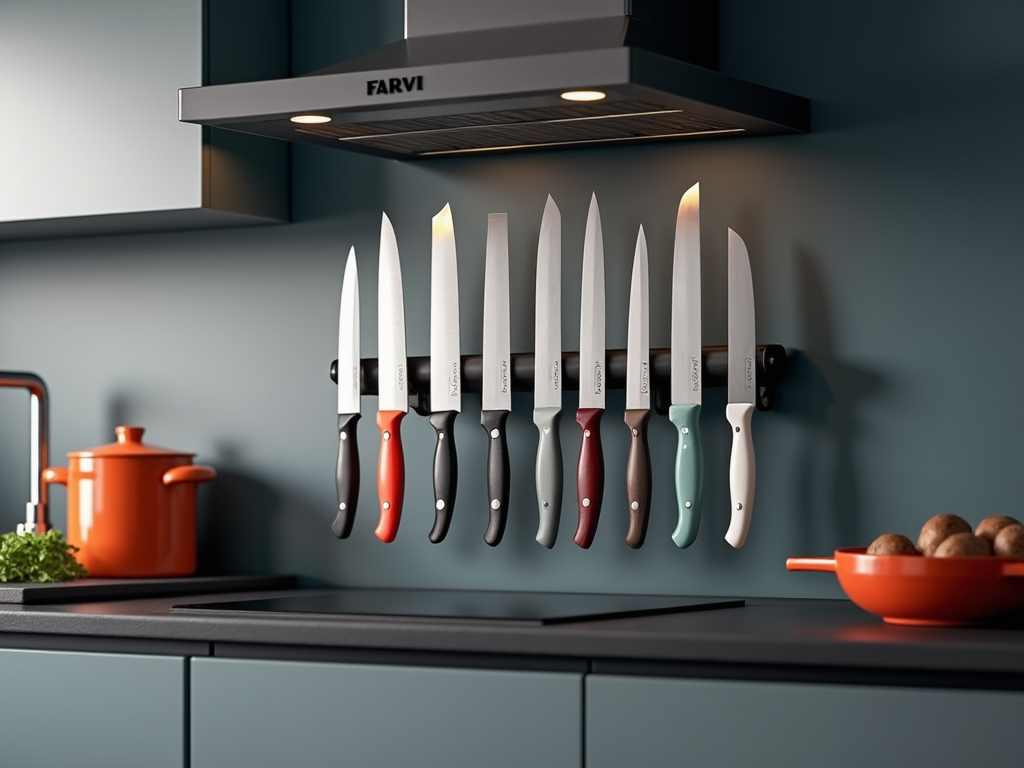Your kitchen knives are essential tools that can greatly influence your culinary creations, yet many people overlook the importance of their care. Proper maintenance can extend the life of your knives, ensuring they remain sharp and effective for years. By adopting a systematic approach to knife care, you not only enhance their performance but also your safety in the kitchen. This article will provide you with detailed insights into how to clean, sharpen, and store your kitchen knives to keep them in optimal condition. Embrace these practices, and watch as your cooking experience transforms with the ease and efficiency that well-cared-for knives can provide.
Importance of Knife Care

Caring for your kitchen knives is essential for maintaining their performance and longevity. A well-maintained knife is both safer and more effective, making food preparation a breeze. Dull knives can lead to accidents due to the extra force required to cut through ingredients, and they can also ruin the integrity of your food presentation. In addition, neglecting your knives can lead to premature wear and potential hazards. Investing time in proper knife care pays dividends in both performance and safety. Let’s dive deeper into the various aspects of knife care that can elevate your kitchen experience.
Regular Cleaning Practices

Keeping your knives clean is the first step in proper care. A variety of practices can help you achieve this. You may think that throwing your knives into the dishwasher is an easy fix, but this could lead to damage over time. Dishwashers can cause chipping, dulling, or damage to the handles, leading to costly replacements. To maintain your knives in pristine condition, follow these essential cleaning practices.
Hand washing your knives is the most recommended method. Here’s how to do it correctly:
- Hand Wash: Use warm, soapy water along with a soft sponge.
- Rinse Immediately: This prevents stains and corrosion by rinsing right after use.
- Dry Thoroughly: Always wipe your knives with a dry cloth to avoid rust.
Sharpening Your Knives
Equally important to cleaning is the necessity of sharpening your knives. Dull blades can make cutting a chore, leading to frustration and potential injury. Understanding when and how to sharpen your knives is vital for ensuring that they remain effective. Pay attention to the signs of a dull knife: if it struggles through food or fails to slice cleanly, it’s time to sharpen. However, there’s no need to panic; there are various methods available depending on your skill level and preference.
When to Sharpen
You should sharpen your knives regularly but also be aware of specific indicators. Look for the following signs:
- Resistance when cutting through food.
- Blade does not slice cleanly through ingredients.
- Difficulty in achieving precise cuts.
Sharpening Methods
There are several options to consider for sharpening your kitchen knives:
| Method | Pros | Cons |
|---|---|---|
| Manual Sharpeners | Easy to control; great for home use | Requires some skill |
| Electric Sharpeners | Quick and efficient | May remove more metal than necessary |
| Whetstone | Allows for precise sharpening | Requires practice and technique |
Storing Your Knives
How you store your knives can greatly affect their performance and safety. Storing them poorly can lead to dull blades and even accidents. It’s vital to choose a storage method that protects the blades while keeping them easily accessible. Let’s explore two popular options: knife blocks and magnetic strips.
Each storage solution has its benefits and disadvantages:
- Knife Blocks: They protect the blades and offer safe storage. However, they can take up valuable counter space.
- Magnetic Strips: These save space and keep knives visible, making selection easier. However, they may not offer as much blade protection as blocks.
Conclusion
Maintaining your kitchen knives goes beyond just cleaning; it encompasses sharpening and proper storage techniques as well. By following these care tips, you can enhance the lifespan and performance of your knives, making your culinary experiences more enjoyable. Incorporating regular cleanings, timely sharpening, and ideal storage practices into your routine will not only keep your knives looking good but also performing at their best. Say goodbye to dull blades and rusted finishes, and welcome a new era of effortless meal preparation.
Frequently Asked Questions
- How often should I sharpen my kitchen knives? Sharpen your knives every few months, or whenever you notice them becoming dull.
- Can I use my knives for cutting frozen food? It’s best to avoid cutting frozen food; use a proper tool designed for that purpose to prevent damage.
- What should I do if my knife rusts? Remove rust with a rust eraser or fine-grit sandpaper, then protect the blade with oil.
- Is it okay to store knives in a drawer? It’s not recommended, as it can dull blades; consider using a knife sheath or an in-drawer organizer.
- How do I know what type of knife sharpener to use? Choose a sharpener that suits your skill level and the types of knives you have—manual for casual users or electric for more frequent sharpening.



